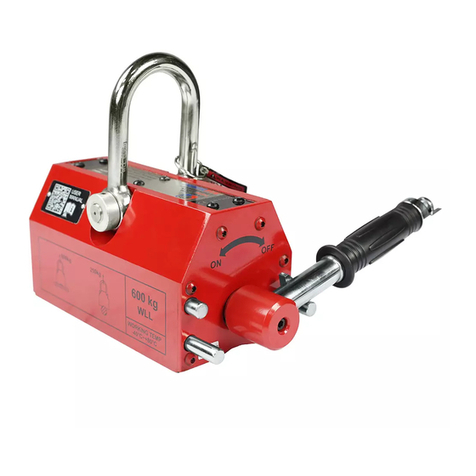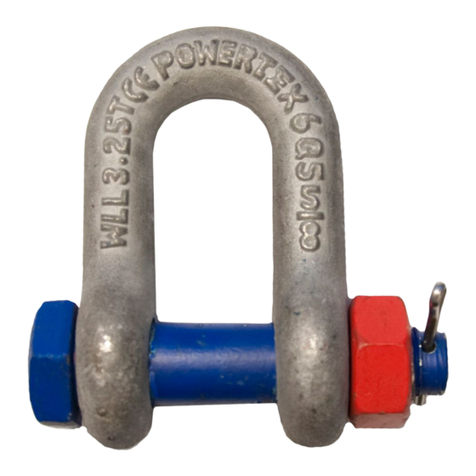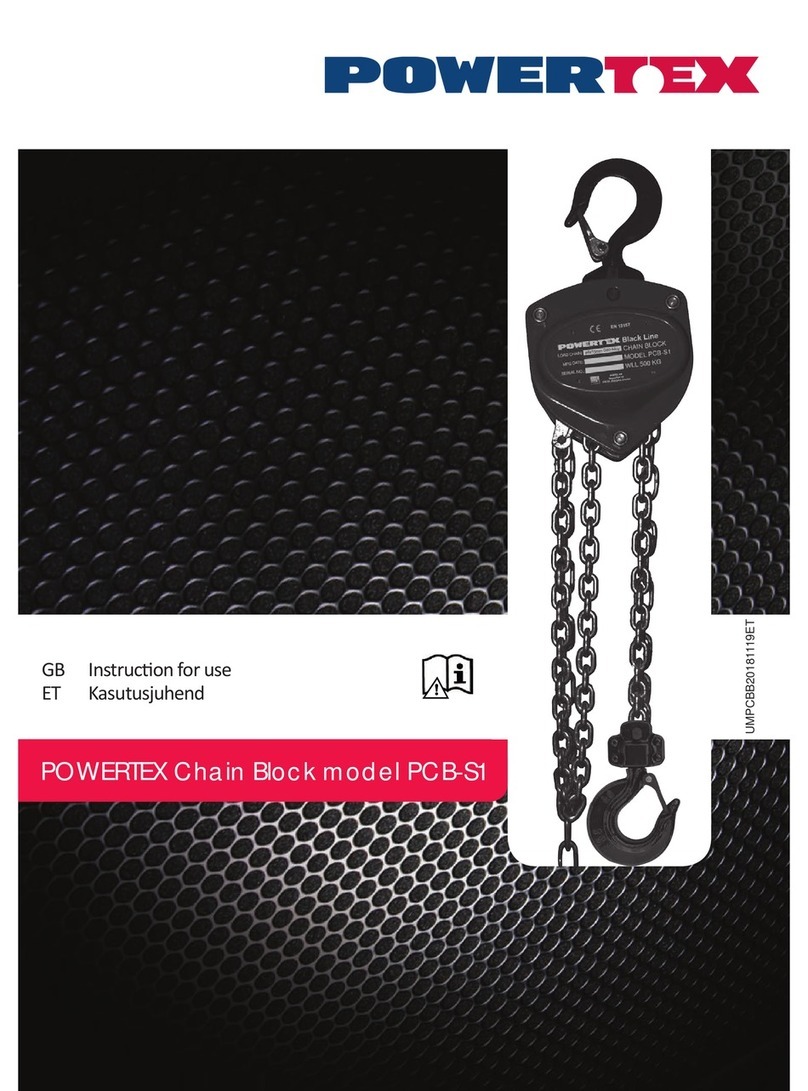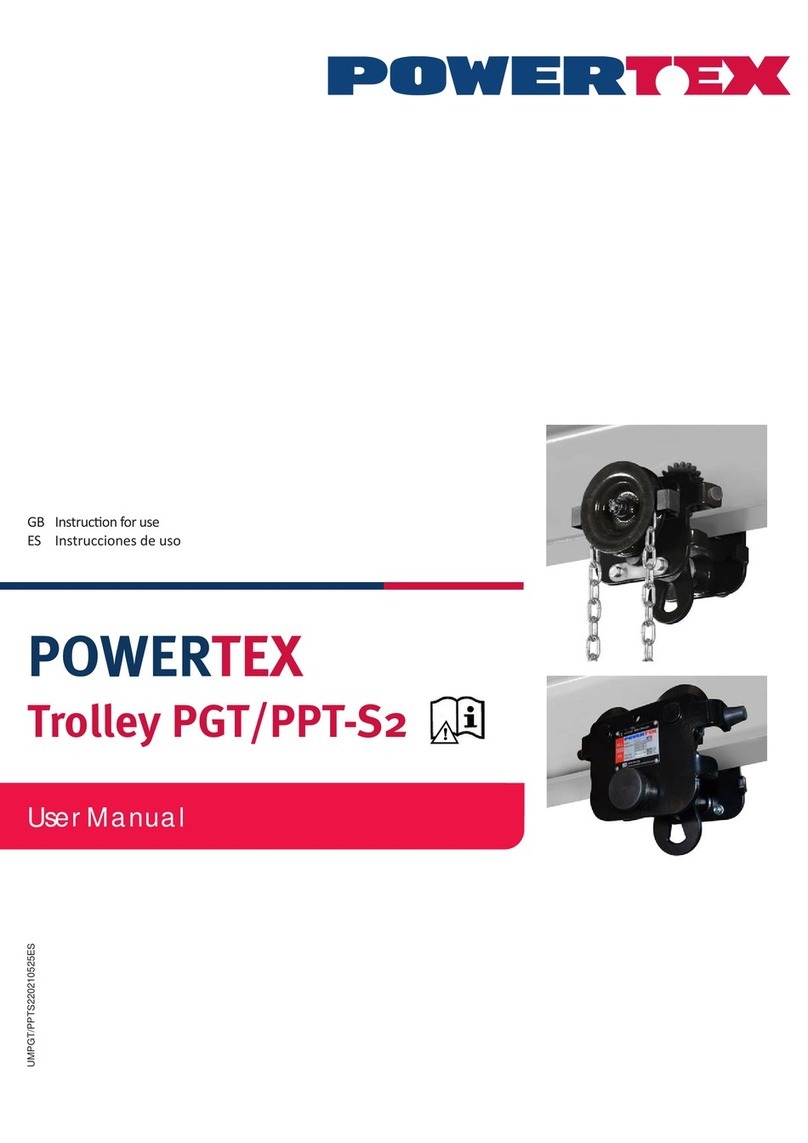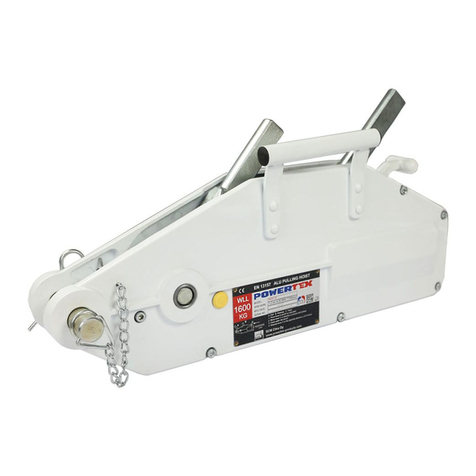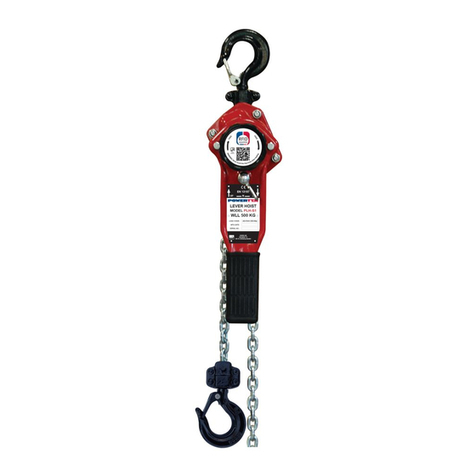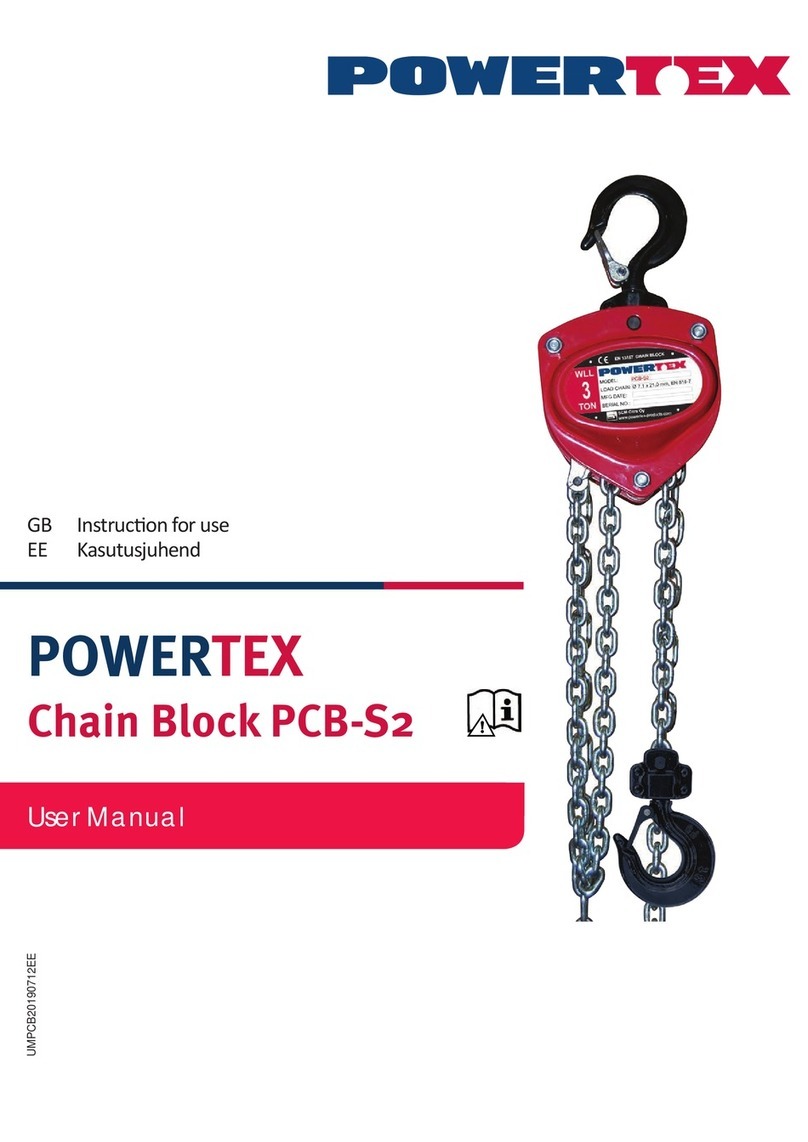
6
Funktion
Funktionsprinzip
Der Seilzug des Drahtseils arbeitet, indem er den Hebel hin- und herzieht, wenn das Drahtseil durch den Hebezeug läuft. Der Seilzug kann zum
Heben, Ziehen und Anziehen verwendet werden.
Der Drahtseilzug hat zwei Backen, die sich in Kurven öffnen, so dass der Draht immer dicht bleibt und sich nicht lösen kann.
Der Sicherheitsstift am Hebehebel des Seilzugs des Seilzugs bricht knapp über WLL, um eine Überlastung zu verhindern. 5 Stück Ersatzstifte im
Griff enthalten.
Verfahren vorab an der Anwendung
Drahtseilzugsinspektion vor dem Einsatz
Eine kompetente Person sollte den Seilzug vor dem ersten Gebrauch visuell und seine Verarbeitbarkeit überprüfen. Durch das Testen des Seilzu-
ges stellen Sie sicher, dass der Seilzug während des Transports nicht beschädigt oder gebrochen wurde.
Inspektion vorab am Hebevorgang
Vor jedem Einsatz müssen die Hebezeuge, Drahtseile, Ankerschlingen und andere Hebezeuge bei Beschädigungen überprüft werden. Überprüfen
Sie auch, ob das Namensschild des Hebezeugs verwertbar ist. Alle Geräte oder Teile mit Mängeln müssen außer Betrieb genommen werden, bis
sie repariert oder ersetzt wurden. In der Anzeige sind die Funktionsfähigkeit der Backenklemmen sowie die Haltbarkeit der Anker durch Heben/Zie-
hen der Last über einen kurzen Abstand zu prüfen und anschließend zu senken.
Drahtseilprüfung
Prüfen Sie das Drahtseil vor Gebrauch auf Verformung, Biegen, Verdrehen, Schneiden von Leitungen, Korrosion, Überhitzung usw.
Augenschlingenhakeninspektion
Prüfen Sie den Haken auf Verformungen, Kerben, Verschleiß und Korrosion oder im Falle von Beschädigungen.
Drahtseilspezikation
Es ist nur erlaubt, diese Art von Drahtseil zu verwenden:
∙Stahlkern
∙Klasse 1770 N/mm2
∙Konstruktion 6x19-IWRC
∙Trocken
Verwenden
Öffnen Sie die Drahtseilbackenklemmen, damit sich das Drahtseil nicht verbiegt oder verdreht.
Drücken Sie den Entriegelungsgriff auf den Seilzug in einer vorwärts gerichteten Position, bis Sie die Backen öffnen hören.
Schieben Sie das Drahtseil durch den Seilzug, damit Sie es von der anderen Seite sehen können. Ziehen Sie so viel Seil, wie Sie benötigen, und
verriegeln Sie dann das Drahtseil, indem Sie den Auslösegriff in eine rückwärts gerichtete Position drücken.
Platzieren Sie die Hebelgriffverlängerung entweder in den vorderen oder hinteren Stift, je nachdem, ob Sie die Last anheben oder senken möchten.
Jetzt ist der Drahtseilzug einsatzbereit.
Nehmen Sie den Anker/Pin raus und befestigen Haken, Fessel, Hebegurt oder ein anderes Werkzeug benötigt, um den Hub mit dem Ankerpunkt zu
verbinden.
Aufmerksamkeit! Überprüfen Sie die Festigkeit des Befestigungspunktes, bevor Sie mit dem Heben oder Ziehen beginnen.
Die Bedienung des Hebehebels hin und her wird den Draht durch den Drahtseilzug bewegen und anziehen. Wenn Sie einen der Hebel bewegen,
können Sie das Drahtseil ein- oder ausziehen lassen.
Nach Abschluss der Verwendung des Seilzuges ziehen Sie den Draht heraus, indem Sie den Entriegelungshebel auf den Seilzug in eine fronte
Position drücken, so dass das Drahtseil gelöst wird. Reinigen Sie das Drahtseil, bevor Sie es durch den Seilzug lösen, damit kein Schmutz in den
Seilzug gelangt.
Nach dem Entfernen des Drahtseils schieben Sie den Auslösegriff zurück in die rückwärts position, so dass sich die Feder entspannt.
Drahtseilzug verankern
Achten Sie beim Anbringen des Seilzugs darauf, dass die Person, die den Seilzug benutzt, nicht von der Ladung in gefährliche Situationen gebracht
wird oder den Drahtseilzug befestigt.
Montieren Sie den Drahtseilzug zwischen dem Verankerungspunkt und der Last, so dass der Drahtseilzug in die gleiche Richtung wie das Drahtseil
gesetzt ist und sich das Drahtseil gerade durch die Richtung der Zugrichtung bewegt.
In einem indirekten Zug verwenden nur stark genug Drahtseilblöcke.
Achten Sie mit Hebegurten oder Hebewerkzeugen darauf, dass sie mindestens die gleiche Belastbarkeit wie der verwendete Seilzug haben. Stellen
Sie sicher, dass der Ankerstift vollständig mit einem Federstift verriegelt ist.
Warnungen
Stellen Sie vor gebrauch sicher, dass alle Schrauben des Seilzugs des Seils angezogen sind. Überprüfen Sie auch den allgemeinen Zustand des
Hebehebel Absenhebel
Freigabehandle
Drah Einfügerichtung
Ankerstift
